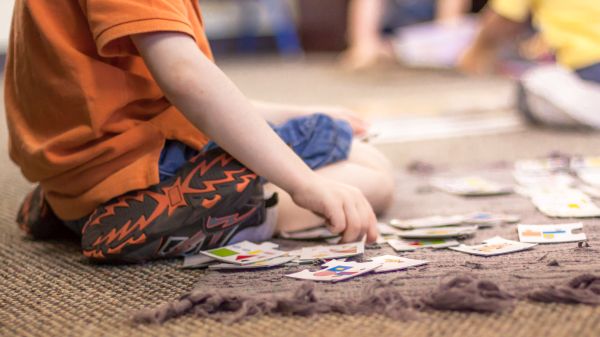
Language and communication skills are the basis for all learning. It helps foster our understanding of vocabulary, our ability to communicate effectively, and our reading skills. Children who develop strong language skills are likely to achieve more in school and find greater enjoyment in learning.
A parent’s role in child development is critical. Research has shown that language development begins at birth. The sounds that make up our environment are some of the first we process. As a child grows, they continue to acquire new language skills based on their exposure to new vocabulary, expressive language, and communication.
For parents looking to strengthen their child’s language development, here are some fun ways to support their growth.
Read Together
Reading is the best tool for developing your child’s language skills–best of all it’s never too early to start! Reading with your child exposes them to new vocabulary and fosters an appreciation for books. This will prove helpful in building a love for reading that lasts a lifetime.
Read a variety of books. Visit your local library for reading events and activities to share the fun with others. When reading with young children–it’s best to be repetitive. Read it, read it again, and again, and again. Another great reading strategy is to find books to read interactively. Interactive read-aloud might include books with a repeating line or a call and response to engage the reader and listener.
Keep the Conversation Going
Practicing our expressive language begins with speech. When young children are developing their ability to communicate, keeping the conversation going is critical.
Don’t be afraid to have adult conversations with a child. While their vocabulary is limited, you can introduce “big” words into their repertoire by peppering them into your conversation effectively. Use synonyms that help them associate the words meaning with vocabulary they know. When clarification is needed, encourage them to check for understanding.
Sign It
It’s perfectly fine to incorporate expressive body language to help further associate words with their meaning. Whether you choose to use proper sign language or prefer to use hand gestures and facial expressions of your own, using body language to convey meaning and tone can further strengthen your child’s communication skills.
Identify Nouns
We live in a world of nouns, and best of all they’re easy to name and identify. Look around your home and see all the nouns around you. Grab some paper and pencils and have fun labeling the nouns around the house with your child. Later you can expand to other environments and broaden their exposure even more.
Go on a Scavenger Hunt
Children are naturally inquisitive. Get creative and come up with a list of items to hunt for based on your destination. Heading to the grocery store? The zoo or park? Wherever you go there are new words to find. Try a theme like naming all the red objects or things that start with “p” you can find–take a picture and look back at the vocabulary you found.
Sing
Music and rhythm do wonders for language development. Pop some tunes in the car or listen while doing chores at home. Encourage your child to sing the songs they’ve learned for family, friends, or anyone else listening. Songs encourage your child to learn through mnemonic devices–improving their ability to recite information like numbers, letters, and days of the week.
Play Simon Says
Playing games that have commands are great for building language comprehension. A classic game like Simon Says is a fun and engaging way to incorporate movement and learning–building neural pathways that strengthen their understanding.
Make Memories
Memories our how we determine our understanding. Build some fun memories with your child and take photographs to capture it. Later use those pictures to reflect on the experience and talk about how it felt. You could even create a scrapbook and have your child come up with the captions for each picture.
Create a Weather Window
Weather seems to pop up as an easy way to start a conversation. Observing the weather is a great way to practice observation skills while also implementing new vocabulary. Your junior meteorologist can place printed pictures and words on the window that represent the current weather report.
Have a Puppet Show
Sometimes it helps to place words in the mouths of others. Try hosting a puppet show and create silly voices for the puppets. What kind of conversations might these characters have together? Encourage the creativity and have fun!
Become Storytellers
Storytelling is a fun way to express creativity and find new ways to communicate and convey meaning. If you need ideas for starting a story, look for writing prompts and story cues that meet your child’s development. For young children, pictures of actions and objects can be helpful tools to get the juices flowing.
Role Play
One thing that is challenging for expressive language development can be situational conversations. Try role playing scenarios like ordering food from a waiter, or asking for help. Try a variety of situations that can help boost their confidence.
Nurturing your child’s language development at home can further support their learning as they grow. Keep in mind that many children develop language skills at a different pace. Do your best to keep the practice going, but don’t stress out if there’s reluctance. Just keep at it, try new things, and continue to use your child’s interest as a guide.





















